Yes, you can paint over chrome. But successfully doing so requires a bit of sanding and priming.
You need to sand the chrome to create a rough surface for the paint to bond to.
After priming and resanding, you can paint chrome using acrylic or latex paint.
How to Paint Over Chrome in 8 Easy Steps
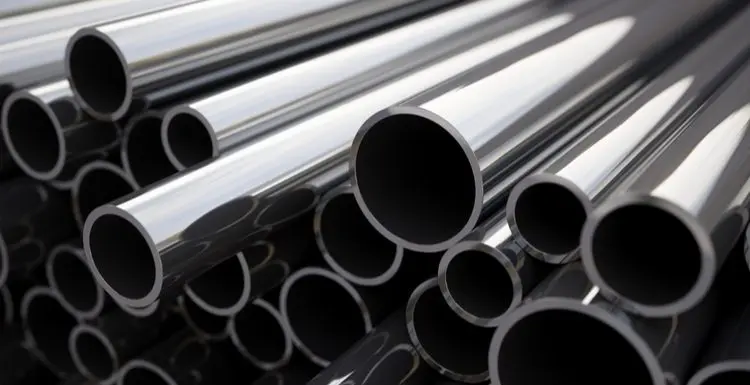
Chiari VFX/Shutterstock
Painting over chrome involves prep work and specific types of paint. Without the right steps, the paint may peel off or promote rusting.
Chrome plating is often used to protect against rust. However, rust may still develop if the chrome is damaged or if the base metal starts to rust.
When these issues occur, you may want to give the chrome a paint job to refresh its look. Here’s a closer look at the steps involved.
1. Buy Paint and Supplies
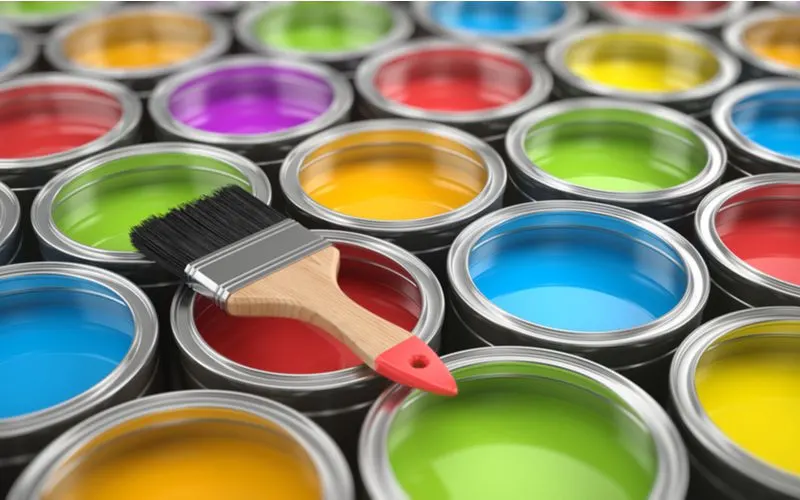
Sashkin/Shutterstock
You first need to obtain the right paint and supplies:
- Latex metal paint or automotive enamel paint
- Automotive metal primer
- Brushes/rollers
- Paint tray
- Plastic sheets and painter’s tape
- Rags
- Soap
- Hammer
- Liquid metal filler/welding putty
- Sandpaper
- Face mask (N-95 mask)
The hammer, liquid metal filler, and welding putty are optional supplies that you may need to fix cracks or damage on the chrome surface.
Purchase primer designed for use on metal surfaces, such as an automotive metal primer or a rust-inhibiting primer. The paint should be latex metal paint or automotive enamel paint.
You’ll also need two types of sandpaper for this project. Use 160-grit sandpaper to rough up the surface of the chrome and 320-grit sandpaper to smooth out any marks.
2. Set Up Your Workspace
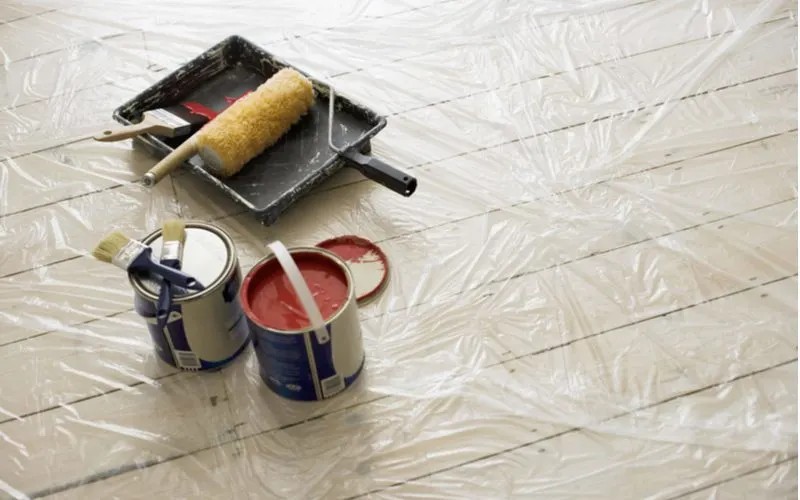
Air Images/Shutterstock
Chrome, primer, paint, and cleaning supplies can irritate the respiratory system. You should paint chrome in a well-ventilated space, such as a garage with the door open or an outdoor patio.
If you’re painting chrome fixtures, such as chrome faucets and handles, remove the hardware and paint in an area with adequate ventilation.
Depending on the location, you may also need to protect the floor and nearby objects with plastic sheets or painter’s tape.
3. Clean the Chrome
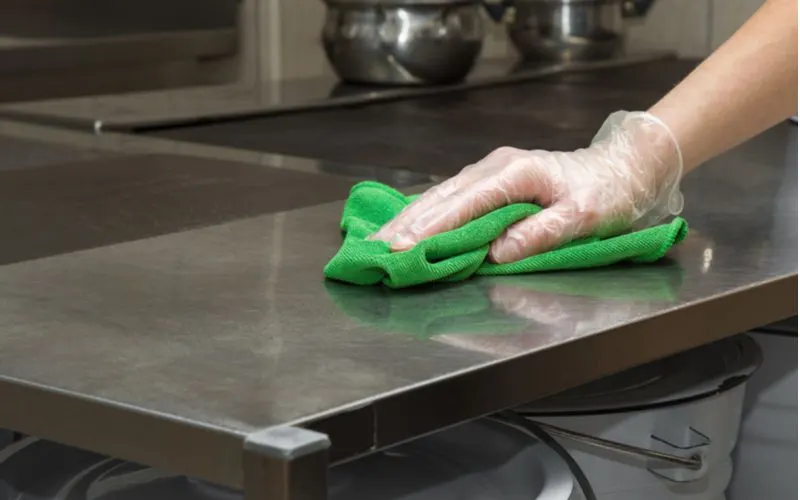
FotoDuets/Shutterstock
Wash the chrome with soapy water. An abrasive cleaner may be needed to get rid of tough dirt and debris. You can also try using a toothbrush to scrub nooks and crevices.
Rinse the chrome thoroughly with clean water and dry it with a clean rag. Inspect the chrome after it dries.
If you notice any greasy or dirty spots, scrub it with soapy water again. You want to get every bit of dirt off the chrome before moving to the next steps.
4. Sand the Surface
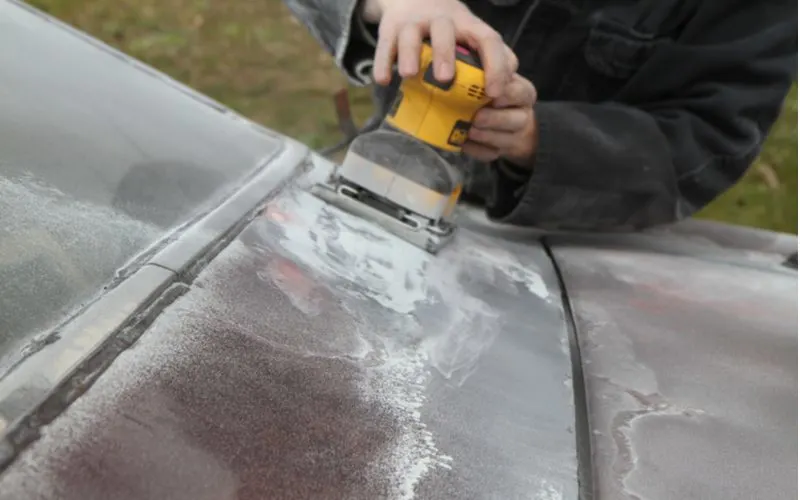
Rianna M. Hill/Shutterstock
Wear a dust mask and start sanding the surface of the chrome object. Depending on what you plan on painting, using a sander may make your job easier. Handheld orbital or palm sanders save time and energy when sanding large surfaces.
If you choose to use a handheld sander, you should also wear safety goggles and work gloves, along with a face mask.
Start with the 160-grit sandpaper. The coarse sandpaper roughs up the surface of the chrome to help the paint adhere. Try to cover every inch of the chrome.
After sanding with coarse sandpaper, switch to 320-grit sandpaper. The finer sandpaper helps remove scratches created with the 160-grit sandpaper.
Use a circular motion to sand the chrome until you have a dull, scratch-free surface. Use a rag to wipe the dust.
5. Repair Cracks and Gouges

Andrey_RU/Shutterstock
Repair any cracks or gouges in the chrome using metal liquid filler or a putty designed for use on metal, such as welding putty.
Follow the manufacturer’s instructions for applying the filler or putty. This typically involves wearing gloves for protection and squeezing the material into the spot you want to fix. You then use a finger or a putty knife to smooth out the material.
You can also use a hammer or a mallet to remove dents or bends in the chrome. Turn the object over and rest it against a hard surface, such as a sheet of metal. Hammer from the interior side of the chrome.
After hammering out dents or filling cracks, you may need to sand the surface again. Start with the coarse sandpaper before using the finer-grit sandpaper to smooth out any scratches.
Rinse the surface of the chrome with fresh water and allow it to air dry. Wait for the chrome to be completely dry before you apply the primer.
6. Apply a Primer
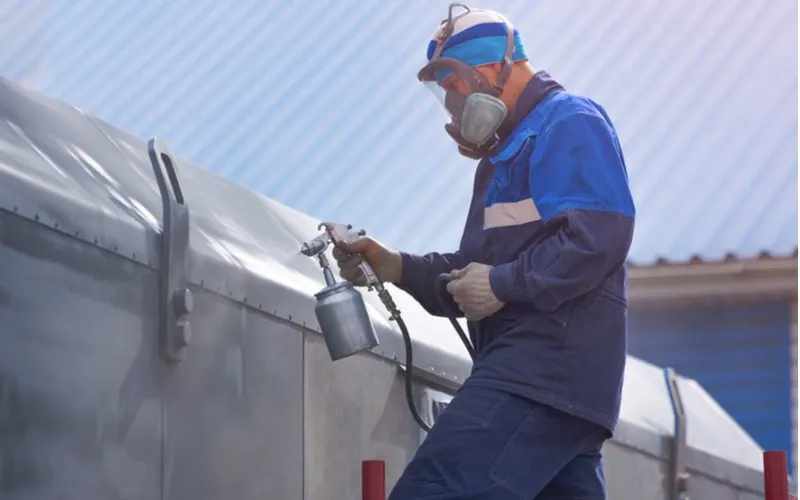
PakulinSergei/Shutterstock
Using a primer is necessary for providing a blank canvas for your paint job. Without primer, you may need to use additional coats of paint to achieve full coverage.
Each layer that you add makes the paint job more tacky and likely to bubble or peel. If you use primer, you should be able to cover the chrome with just two or three light coats.
Cover any surfaces that you want to protect from paint, especially if using spray paint or a spray gun. Apply a coat of primer to the chrome.
If you’re using spray paint or a spray gun, spray from about one foot away. Spray in sweeping motions, starting and ending past the edges of the chrome object.
If you’re using a brush or roller, use light coats of primer while looking for any drips. Allow the primer to dry for 24 hours before adding a second coat.
Wait for the primer to dry thoroughly. The primer may take about 24 hours to dry, depending on the humidity and temperature.
After allowing the primer to dry, lightly sand the surface using the two types of sandpaper. Use more caution when sanding. You don’t want to sand away the primer that you just added. Wipe the dust away using a clean rag.
7. Paint the Chrome
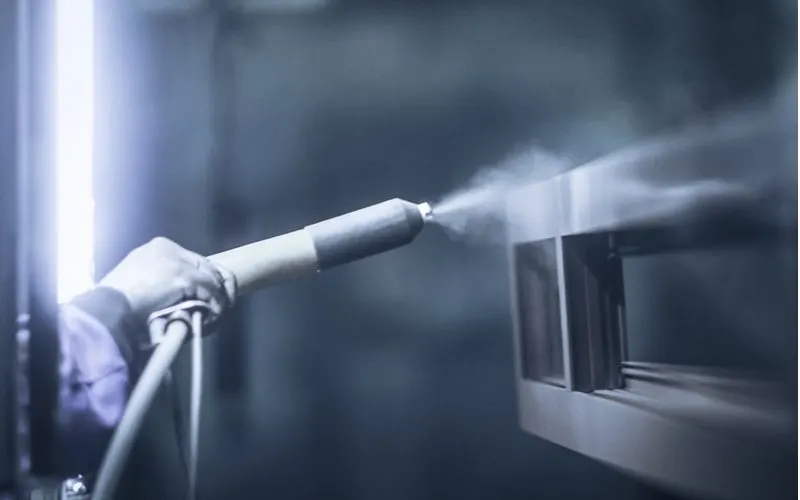
Anna Berdnik/Shutterstock
Paint the chrome using light layers of paint. Allow each layer to dry for several hours before adding another layer. You may need to apply two to three coats before the true color of the paint appears.
As with the primer, you can use paintbrushes, rollers, spray guns, or spray paint. Remember to use paint that’s formulated specifically for use on metal.
8. Apply a Sealer
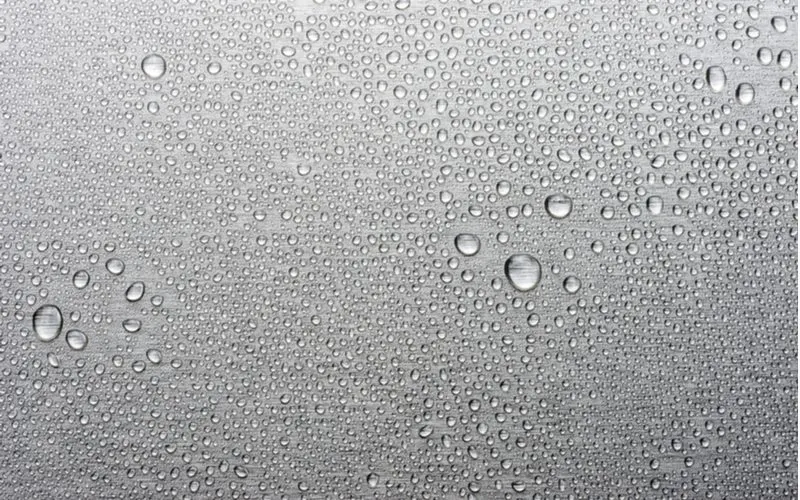
Zerbor/Shutterstock
Applying a sealer is an optional step that may keep the paint from peeling or chipping. You can add sealant using a brush, spray paint, or a spray gun.
The sealant also comes in different finishes, allowing you to add a glossy or flat finish.
After applying the sealer, which is also sometimes called a “clear coat,” you can remove painter’s tape and other material used to protect against paint splashes.
You should wait several days before reattaching chrome hardware. Wait about a week after applying the sealant before buffing the surface with a buffing cloth.
Best Paint for Chrome
Chrome surfaces are becoming increasingly popular. They have become so popular because of their glossy surface and elegant appearance. But it’s essential to use good paint when painting them. You need to choose a paint:
- Durable.
- That won’t damage the chrome.
- That won’t flake off.
- Not flaking.
Some of the best types of paint for chrome surfaces:
Epoxy Paint
Epoxy paint is the perfect choice for painting chrome. It is because, once dry, it forms a hard, durable seal. This seal helps resist wear and tear. It is also one of the easiest types of paint to apply to chrome.
Epoxy paint has a long-lasting resistance to:
- Corrosion.
- Chemicals.
- Shocks.
- Abrasion.
It means that your chrome will look great for years to come. Plus, you can apply it to any shape of the surface.
The paint will hold up even if the shape is bent or chipped. The only drawback is that epoxy paint can sometimes be more expensive than other types of paint.
Enamel Paint
Enamel paint is also a great choice for those who want to paint chrome. Not only does it provide a bright, glossy finish that will make your item stand out. It also has excellent durability compared to other types of paint.
The enamel paint prevents rust and corrosion. It forms a seal between the chrome and the surrounding air.
Also, applying this type of paint is usually easier because of its high adhesive properties. If you do your project right, you can enjoy the shiny look of your chrome part for years to come.
Urethane Paint
Painting chrome requires special care. Choosing the right type of paint is very important to get a good result.
Urethane paint is an excellent choice for chrome. All because it dries and forms a hard coating. The coating will last for years, even outdoors.
UV deterioration is not a problem with urethane paint. Because of this, it is the perfect option for any object, even if it is exposed to the sun. Urethane paint also offers a fantastic glossy shine. It is ideal for giving dated chrome a fresh coat of paint.
Due to its endurance, urethane paint is a suitable option for coating chrome surfaces.
Other Things You Should Consider
How Do I Get Paint To Stick to Chrome?
You’ll need to follow several steps to get the paint to stick to the chrome. First, clean the chrome thoroughly with rubbing alcohol or a degreaser so there’s no oil, dust, or dirt.
After cleaning the chrome, you’ll need to sand the surface with fine-grit sandpaper so it helps the paint stick better.
You’ll want to use a strong primer that works for chrome surfaces. Doing so will help ensure the paint doesn’t move around when it dries.
Next, you’ll paint the surface and wait for it to dry thoroughly. The final step to ensuring the paint will stick to the chrome is to apply a clear coat of sealant.
Can You Paint Straight Onto Chrome?
You can paint straight onto chrome, but you shouldn’t. If you try to paint on a chrome surface without preparing the surface with rubbing alcohol, sanding, and primer, you risk the paint not sticking well.
Painting directly onto chrome will make your task take longer since you’ll have to clean up and start all over since the paint won’t stick.
How Do You Make Chrome Color With Acrylic Paint?
To make a chrome color with acrylic paint, you’ll need an acrylic paint color of your choosing, a bowl, a paintbrush, and metallic silver acrylic paint. You’ll start by adding the metallic silver hue and then the color of your choice in small amounts.
You’ll want to stir the mixture and add more of the non-metallic color until you get the chrome color you’re looking for. Once you do, you can paint whatever you plan on painting with your new chrome acrylic paint.
If you’re painting over chrome with your freshly made chrome paint, be sure to follow all the instructions for painting a chrome surface.
Conclusion
Without following the right steps, the paint may not stick to the chrome. It’s likely to peel or chip away. Sand the surface of the chrome material before applying a primer.
Allow the primer to dry before lightly sanding a second time. After wiping the surface clean, you’re ready to paint. Protect your paint job by adding a sealer.
